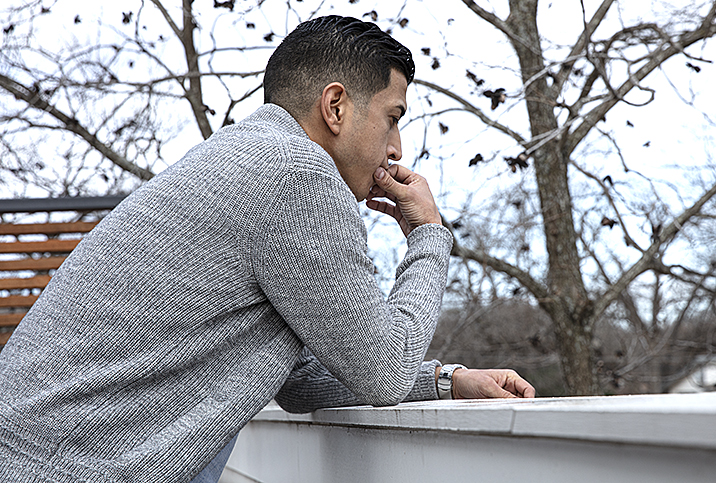How to Live With Chronic Pain

When the average person experiences pain, it’s generally a warning sign that something’s off somewhere in the body, either from a specific injury or a medical event. Typically, the pain goes away with the problem.
For some people, however, the sensation persists beyond a reasonable amount of time after injury or arises without clear stimulus. This is chronic pain, a condition experienced by an estimated 1 in 5 adults. And while chronic pain becomes more prevalent with age, it can affect anyone, even young people.
Unfortunately, chronic pain can lead to decreased quality of life and increased healthcare costs. The decreased quality of life is partly because chronic pain can create significant changes over time throughout the body, often in the nervous system. Once the nervous system is reached, any part of the body may be impacted by chronic pain or complications related to it. This total involvement of the body necessitates a multipronged approach to treatment.
Such a large commitment to treatment may seem daunting, and living with chronic pain is certainly an adjustment, but with the right treatment methods and overall wellness routines, patients can still live a relatively normal life. Chronic pain management usually involves approaches such as daily medications and treatments, frequent doctor visits and lifestyle changes, both big and small.
Symptoms & their treatments
No one experiences chronic pain in exactly the same way, so cohesive, universal treatments are elusive. However, generally successful solutions are available for specific areas of pain:
Lower back pain
Lower back pain can be treated by stopping physical activities for the duration of the pain, alternating heat and ice to relax the back muscles, and taking over-the-counter pain medications such as acetaminophen or ibuprofen.
Additionally, if lying on your back causes the pain to get worse, try lying on your side with your knees bent and a pillow between them. If lying on your back doesn’t cause more pain, putting a pillow under your thighs to elevate them can decrease the pressure on the lower back. Taking a warm bath or getting a massage can also help relax the back muscles.
If necessary, prescription medications and physical therapy can also reduce pain.
Joint pain
Treating joint pain with nonsteroidal anti-inflammatory drugs (NSAIDs) and non-NSAID medications such as acetaminophen—alternating between the two is important, to avoid kidney injury—as well as topical medications can help decrease inflammation, swelling and, ultimately, pain. Keeping up with a moderate exercise routine can also help, though always make sure to stretch well before exercising to avoid further pain.
Warm baths, frequent stretching in general and massages have been known to relieve joint pain as well. You can also reduce the stress on your joints by keeping your weight in a healthy range. For all types of pain, it is crucial to be mindful of your diet.
Headaches
Over-the-counter painkillers such as acetaminophen, ibuprofen, naproxen and aspirin can help relieve headaches. Another option is to place a cold pack or ice cubes wrapped in a towel directly on the forehead or the back of the neck.
Also, keep a sleep journal and track how long and well you slept, how much caffeine you had that day, what you ate and your stress levels. Doing so will help you establish patterns that work well for you and also help you establish a healthier sleep hygiene. For example, try limiting screen time before bed, and aim to sleep and wake up around the same time every day.
Bright, flickering lights or even light from a screen can aggravate a headache, so finding a dim setting to sit in with your eyes closed is another effective option. Aside from that, a little caffeine or a massage can help ease headaches as well.
Achy muscles
Many home treatments can be highly effective at relieving muscle pain. These include resting the part of the body that is experiencing pain, taking over-the-counter painkillers (an anti-inflammatory such as ibuprofen), using a topical cream or putting an ice pack on the affected area to reduce pain and inflammation. Improving your diet can help, too.
If none of those methods work, stretching the muscles, engaging in stress-relieving activities such as meditation and light yoga, and simply resting can be surprisingly helpful. However, make sure to avoid any high-impact physical activities that might exacerbate the pain.
A burning or tingling sensation in different areas of the body
A temporary burning or tingling sensation that disappears on its own is nothing that needs treatment. However, if it persists, treatment will depend on the underlying cause.
Treatment methods include over-the-counter anti-inflammatory pain relievers, prescription pain relievers, physical therapy, diet changes or surgery. Before you begin any self-treatment regimen, schedule an appointment with your doctor to avoid unwanted side effects, particularly those that result from medications you already may be taking.
Sudden sharp pain
Sudden sharp pain is probably not serious if it goes away quickly and doesn’t return. However, if a sharp pain persists, it can require immediate medical attention, as this is a signal that something is not functioning properly in the body.
Sudden, sharp chest pain is the most serious, and seeing a doctor right away can be lifesaving. If a sharp pain does not fade after a short period, contact a medical professional as soon as possible.
Vicious cycles around chronic pain
Whether or not it is fully managed, chronic pain is known to affect mental health. A serious emotional strain is involved in handling long-term discomfort and distress, and it’s normal to develop depression or anxiety as a result, which can ultimately jeopardize your relationship with yourself and others if it remains unchecked.
In addition, if mental health issues go untreated, they can drain the energy you need to manage your physical symptoms. See a professional therapist or psychiatrist for assistance so you can stay mentally and emotionally healthy.
Chronic pain can also cause people to develop sleep issues, which can severely impact many aspects of a patient’s life, with many reporting higher pain intensity and disability. Low-quality sleep can result in exhaustion and fatigue. In turn, fatigue can make pain more difficult to manage.
As always, talk to your doctor for insights on how to avoid falling into these pain traps. Strategies may include seeking a counselor with special training for chronic pain patients or using sleep positions and apparatuses that ease discomfort when lying down. Again, a sleep journal can be effective.
Reaching out to others
The symptoms of chronic pain can change shape and appearance over time, so no “one and done” conversation can be had with your doctor. Open and consistent communication about your pain and how it is impacting your quality of life is imperative to managing the condition.
In addition, strangers and loved ones alike can be surprisingly accommodating when they know your condition. Give them a chance to help you in both big and small ways by communicating your needs, whether they include dietary restrictions, physical assistance or anything else. Allowing your loved ones into your pain management strategies will not only ease your burden and provide healthy and natural lines of support, it also may even improve your relationships.
















